Last week I introduced the Dombrovskis theme: Black has a certain move which, in one phase of the problem prevents a mate and in a different phase provokes the same mate. Last week's problem came from the master himself, and coupled two such variations with an astonishing key move, which granted two flights. This week we have another presentation of the theme, from a 1985 problem by composer Dimitris Kapralos. White is to play and mate in two:

Remember that white is always moving up the board and black is always moving down. Vertical files are labeled a--h from left to right, while horizontal ranks are labeled 1--8 from bottom to top. So, in the diagram, the white king is on b1 and the black king is on c5.
Now, this problem is an example of a task. In task problems, the primary intent is to show the most extreme version possible of something. In this case, we have four Dombrovskis moves by black, which to date is the greatest number of ever achieved. Let's see how this is achieved.
White has some plausible tries. For example, the move 1. Qd7:
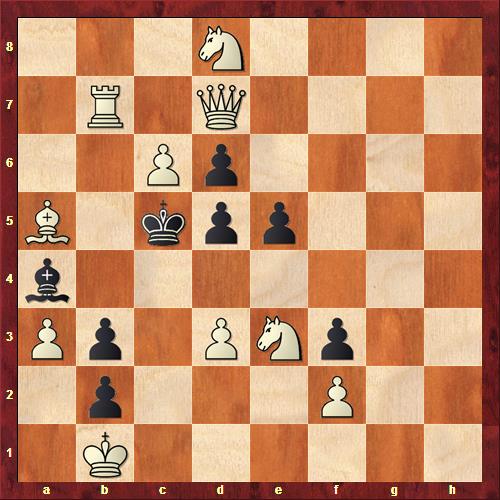
This covers the c6 pawn, which frees up the white knight to play 2. Ne6 mate on the next move. Sadly, black escapes the noose by playing 1. ... Kd4. Playing Ne6 would not give mate, since the d3 square is unprotected.
So white might try 1. Rb4 instead:

This is an anti-critical move (this term was also introduced last week) with respect to the white bishop. White is now threatening 2. Bb6 mate. Prior to Rb4, this move would have interfered with the rook, leaving b5 uncovered. Sadly, it is also a critical move with respect to the black bishop. Black plays 1. ... Bb5, which defeats the threat by cutting off the rook's defense of b6.
How about 1. Nf5:

This defends the d4 square, and therefore threatens 2. Bb4 mate. The knight move also undefends d4, however, meaning that black can defeat the threat with 1. ... d4.
Well, what else? How about the crude 1. Qxf3:
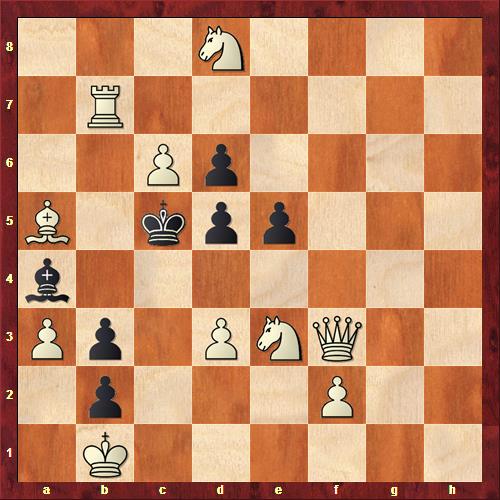
which threatens the equally crude 2. Qxd5 mate. Still no dice, since black simply blocks the queen with 1. ... e4.
White must be getting pretty frustrated by now, but we have not exhausted all of his possibilities. The correct move is 1. Qf5!:
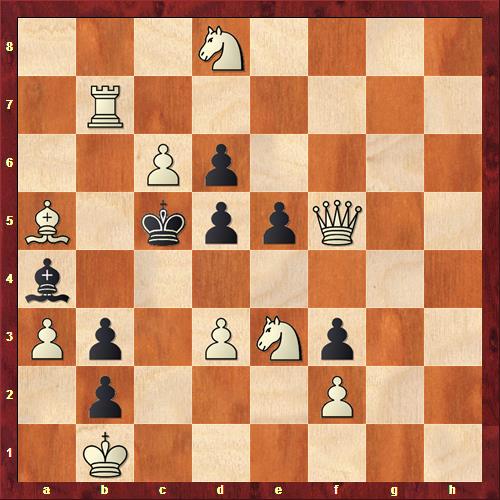
This is a waiting move. It threatens nothing, but merely waits to see what black will do. This is where the fun begins. The first variation is 1. ... Kd4 2. Ne6 mate:
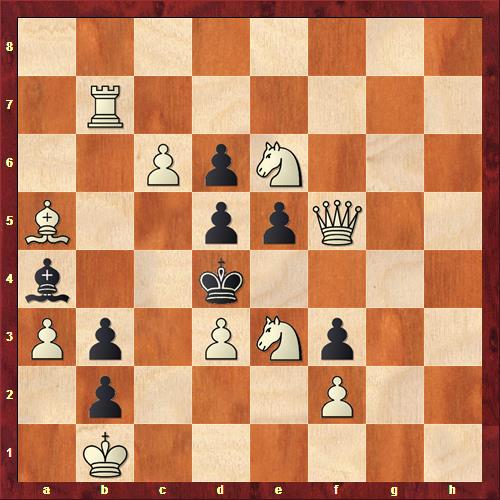
In the try play, this did not work because d3 was not defended. But white's Qf5 move takes care of that weakness.
The second variation is 1. ... Bb5 2. Bb6 mate:
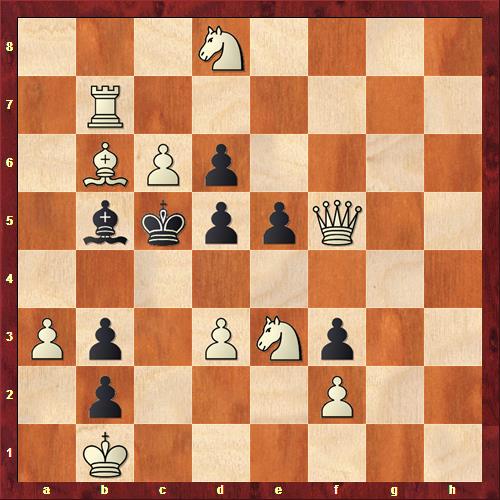
In the try play, Bb5 defeated Bb6 mate by cutting off the white rook. But now the move merely self-blocks his own king, making Bb6 mate possible.
The third line is 1. ... d4 2. Bb4 mate.
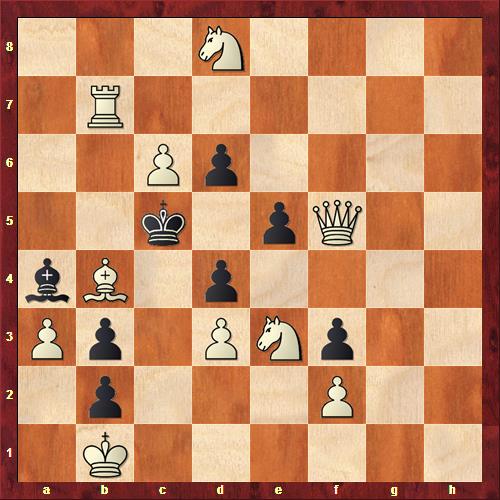
In the try play, black's d4 move took advantage of the fact that white's knight had moved by providing a flight for the black king on d5. This time white's knight has not moved, implying that d4 merely block's the king's escape on the square d4.
The final line is 1. ... e4 2. Qxd5 mate:
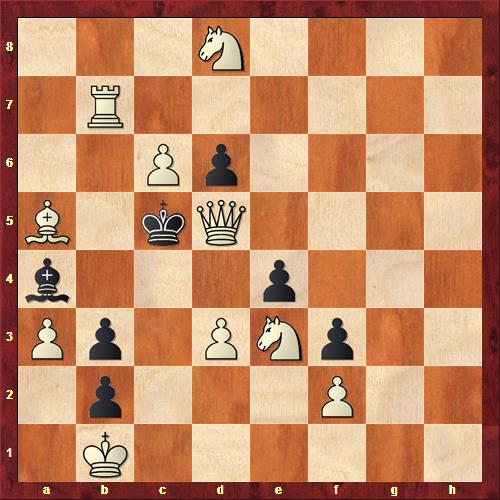
Previously, black's e4 move closed a line for the white queen, thereby preventing Qxd5 mate. This time it opens a line for the white queen, thereby making that mate possible.
Pretty neat! Composers of task problems tend to be forgiving of constructional sins that might be regarded as unacceptable in normal problems. Sometimes showing the most extreme version of something simply requires accepting weaknesses in other aspects of the problem. Task problems will often have an excessive amount of force, or have very violent key moves.
This problem fares pretty well. Four Dombrovskis variations is not easy to achieve, and to do it with just eighteen units is no small feat. However, they key is only mediocre, since it involves bringing a powerful piece closer to the action. Moreover, the strategy is less interesting here than in last week's problem. Presenting the theme in a waiting problem is not going to be as interesting as doing it in a threat problem, where the Dombrovskis moves arise as defenses.
These are small criticisms, though, and this is undeniably a great problem. I just wanted to give some idea of the sorts of considerations weighed by tourney judges. Task problems will sometimes receive a “Special Prize.” This designation indicates that something worthwhile has been accomplished, but that it probably is not right to judge it by the same standards as normal problems.
See you next week!

How about Rb4 and then Ne6? It looks like black can't block that.
After 1. Rb4, black plays 1. ... Bb5. Now, Ne6 is not mate, because black will be able to take the pawn on c6.
For me, what works against this problem is the simple fact that Black only has 5 legal moves available to him at the start. (That said, I really do find the 2nd winning variation very special. Brings a twinkle to the eye, that one...)
That's another good illustration of the sort of compromise you sometimes make to achieve a task.